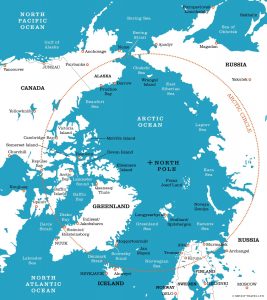The Arctic region is the most northern region of the world and is the region that is most vulnerable to climate change. Because this region is already experiencing the effects of climate change, what is being done to help manage those effects?
Before that question can be answered, here is some important background information:

What is the Arctic?
The Arctic region is hard to define. First the Arctic was said to be anything above 66° North Latitude (the well known Arctic Circle), but that definition leaves out a lot of what is known to be the Arctic. It was then defined as any area with a mean temperature of at or below 50°F in July, but with global temperatures rising that definition has become outdated and inefficient.
It is now known to be comprised of the A5, A8 and indigenous communities and is a recognized zone of peace.
Becoming a matter of high politics:
Climate change has begun to vastly change the Arctic landscape through the melting of glaciers, sea-level rise, melting sea ice, coastal erosion and ocean acidification. Because of the new opportunities that are created by the changing landscape, tensions between international states and actors are rising turning the arctic into a matter of high politics.
High politics by definition does not concern local matters such as cultures, environments/ecosystems, and local economies. This could be devastating to the Arctic as communities are eroding into the ocean, animal species are becoming endangered, glaciers are melting and the ocean acidity is increasing.
What can be done to help the Arctic?
As tensions in the Arctic rise, so will the environmental impacts of climate change.
Explore the rest of this website to learn about:
Current challenges in the Arctic such as: